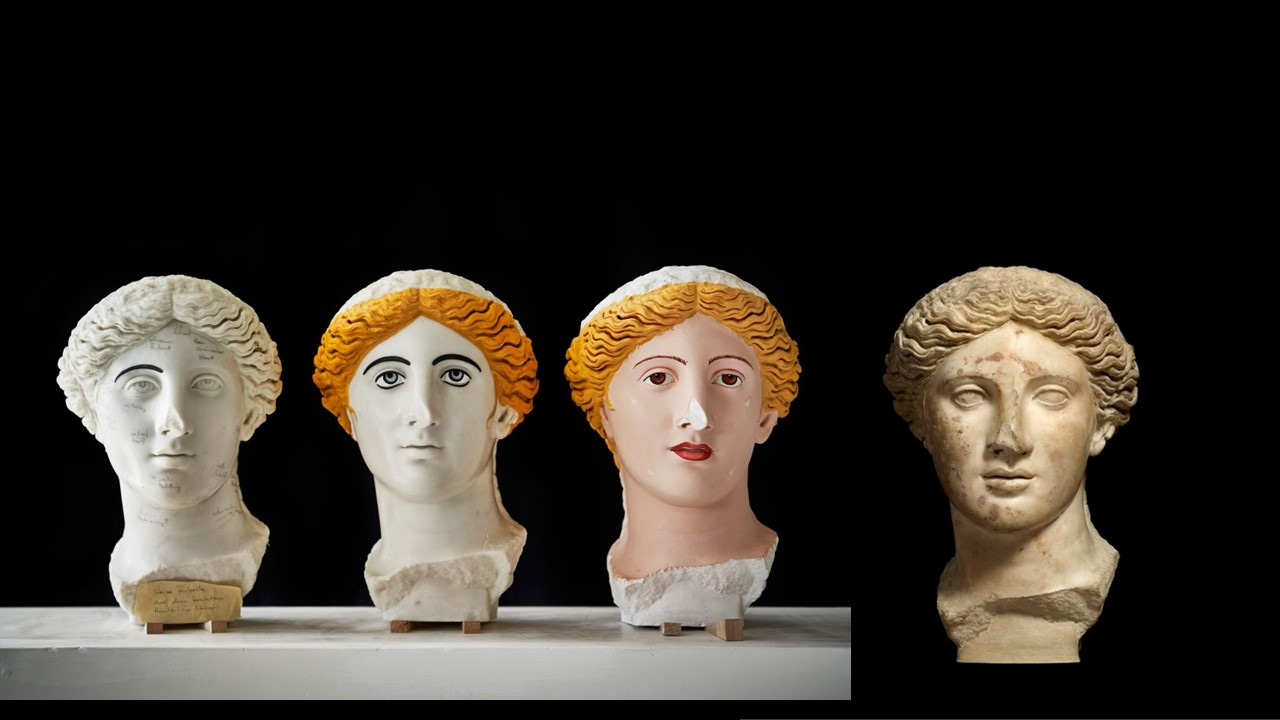Above: Goldie Hawn and Carol Channing sing “Blondes” on Laugh-In.
The ancient Greeks categorized women who had sex for money into at least two categories:
The hetaraie, who might be citizens or freedwomen, and who generally would have one wealthy patron for a period of time; and
The pornai, who saw multiple men over the course of a workday, often worked in brothels; though they could come from anywhere, some of them were enslaved prisoners of war.
Members of both of these very distinct categories of the whorearchy had few rights, as was the case for women in Ancient Greece generally; they couldn’t vote, wives were stuck in the home, and child marriage was a regular practice. However, it was common for even the enslaved pornai to be able accumulate some of their money and buy their way out of servitude. And both categories of worker could get an income boost from having blonde hair.
Blonde hair was associated with eroticism. This was related to the ethnic characteristics of immigrant and slave women from Gaul and Germany, who were much more likely to have blonde hair than the generally dark-haired Greeks. Some brothels required their non-blonde workers to lighten their hair or wear blonde wigs. Aphrodite, the Greek goddess of romantic, erotic, and commercial love, was frequently featured with blonde hair, and put on a pedestal (from which, it is worth noting, it is impossible to move). Because of the association with exotic women, and aspirations to the sexual expertise one assumed a professional would have, blonde hair became a popular affectation among wealthy women.
The ancient Romans had several categorizations of sex workers, some of whom were compelled to wear togas that set them apart from non-prostitute women. Just a few of the categories in their whorearchy include:
The Delicatae, women from patrician families who often wore masks;
The Ambulatae, who walked the streets; and
Bustuariae, who worked in graveyards, and who are said to have written their prices on the backs of headstones with chalk.
As the Romans had appropriated so much of the culture of Greece, they had a blonde Venus to approximate Aphrodite. Blonde hair continued to be associated with the exoticism of foreign women and the eroticism of sex professionals, sustaining its popularity. And like the wealthy matrons of Greece, some of the well-to-do and powerful Roman women went blonde, whether with dye or false hair, including the wearing of wigs powdered with real gold dust. This offended one Roman moralist so much that he said it amounted to treason when a Roman woman wasn’t satisfied with her natural Roman coloring.
Above: An art historian attempts to recreate the original paint colors (based on remaining traces) on an ancient Roman sculpture of a goddess. Source
Sources and Further Reading:
Kapparis, Konstantinos. Prostitution in the Ancient Greek World. De Gruyter, 2018.
Mc. Ginn, Thomas A.J. Prostitution, Sexuality, and the Law in Ancient Rome. Oxford University Press, 1998.
Pitman, Joanna. On Blondes. Bloomsbury, 2003.
Roberts, Nickie. Whores in History. HarperCollins, 1992.




"The pornai" - same root as "pornography"?
I love the whorestory you're keeping alive and relevant. There was a word I came across and I'll be damned if I can find it now. I believe it was ancient Greek, a disparaging term for prostitutes who stole, who fleeced their tricks. It translated directly into "chicken," and it's how I always saw myself. Gallinae or something close to that...work is work. Sex was work. Dangling sex to steal was easier work, por moi.